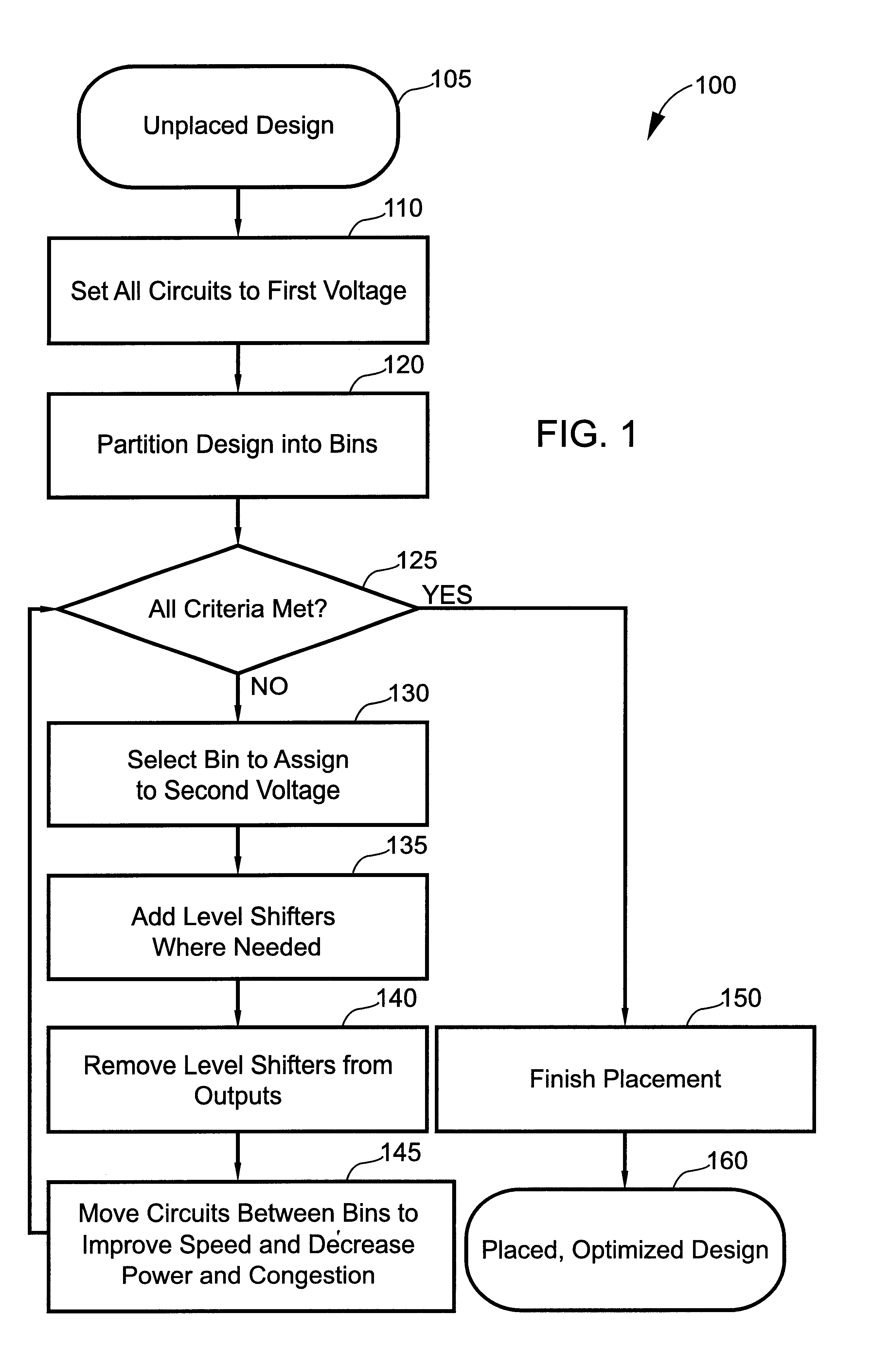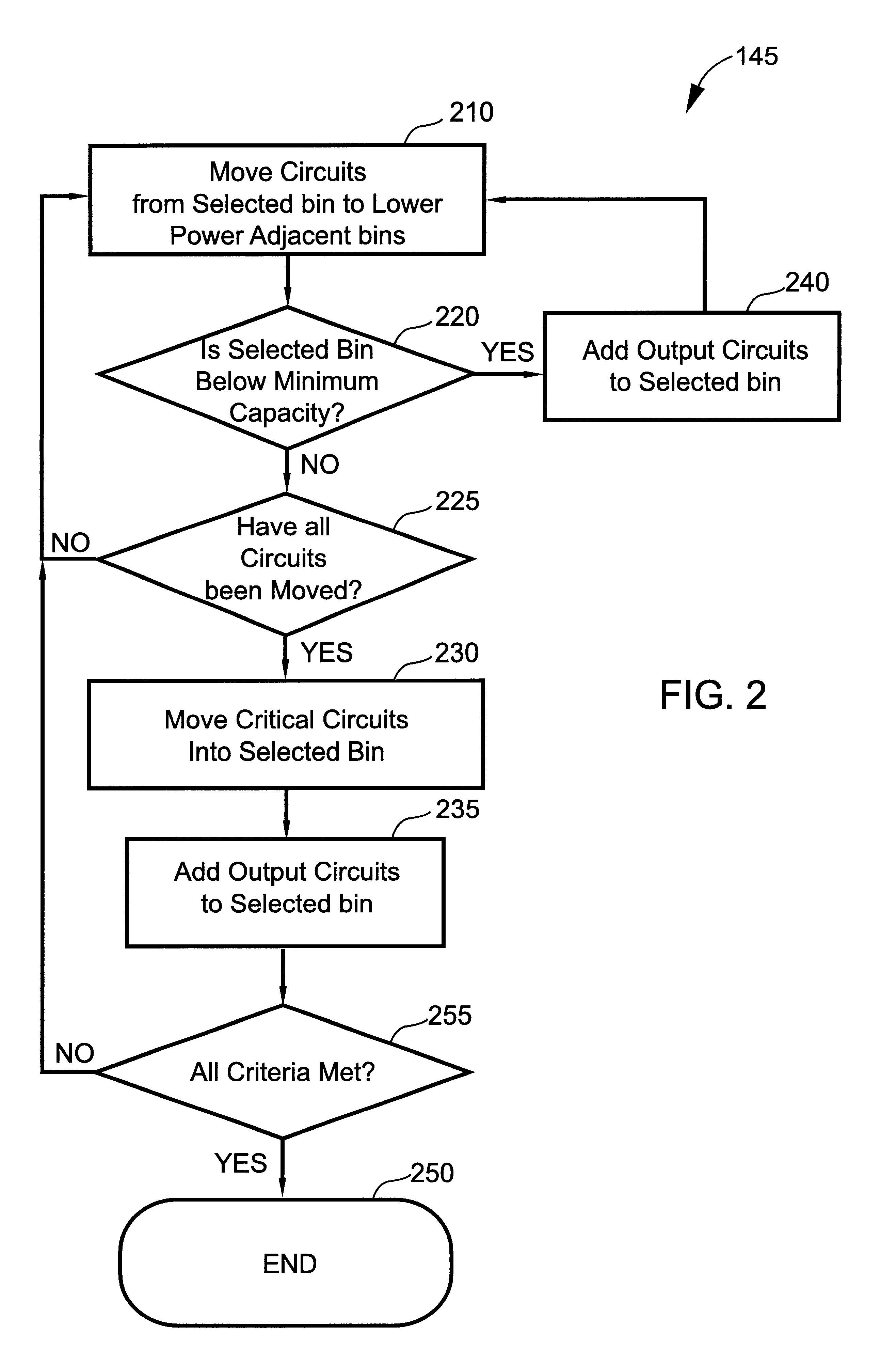Concurrent logical and physical construction of voltage islands for mixed supply voltage designs
a technology of voltage islands and circuits, applied in the field of computer-aided placement of circuits, can solve the problems of reducing circuit performance, islands may not be conducive to good logical placement, and reducing circuit performance, so as to reduce power distribution costs, reduce the number of level shifters used, and improve logical placement
- Summary
- Abstract
- Description
- Claims
- Application Information
AI Technical Summary
Benefits of technology
Problems solved by technology
Method used
Image
Examples
Embodiment Construction
As stated previously, the present invention relates to computer-aided placement of circuits on a semiconductor chip. For those not familiar with this topic, the following Overview section briefly introduces some of the concepts associated with placement processes. Those skilled in the art of computer-aided placement of circuits on a semiconductor chip may wish to proceed directly to the Detailed Description.
Overview
When a semiconductor chip is designed, computer design tools are used. These tools work on and produce a file called a "netlist." This netlist contains a description of all of the gates and the connections between them. A semiconductor chip designer generally works with a simulated logical layout of the chip. In other words, the semiconductor chip will perform some function, and the designer ensures that the simulated chip actually logically performs the function. When the actual chip is ready to be made, chip designers use a placement tool that takes the original netlist...
PUM
 Login to View More
Login to View More Abstract
Description
Claims
Application Information
 Login to View More
Login to View More - R&D
- Intellectual Property
- Life Sciences
- Materials
- Tech Scout
- Unparalleled Data Quality
- Higher Quality Content
- 60% Fewer Hallucinations
Browse by: Latest US Patents, China's latest patents, Technical Efficacy Thesaurus, Application Domain, Technology Topic, Popular Technical Reports.
© 2025 PatSnap. All rights reserved.Legal|Privacy policy|Modern Slavery Act Transparency Statement|Sitemap|About US| Contact US: help@patsnap.com



